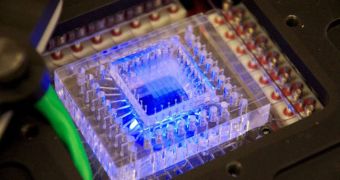Over the past few years, numerous discoveries about our solar system have made astronomers and astrobiologists believe that the prospect of finding life on other planets around us, or beyond, may not be as far-fetched as once thought. Some believe that there is actually a pretty good chance that Mars, as out closest neighbor, may actually be containing life, with the same genetic properties as it has on Earth. As a result, the Search for Extraterrestrial Genomes (SETG) project was born. The goal is to deliver scientific instruments to Mars, that could look for DNA in the planet's ices and sand.
Evolutionary biologists often give the example of Galapagos Island iguanas, which have developed differently, but from a common ancestor, from iguanas elsewhere. Isolation triggered these changes, and some believe that the same may be holding true for space as well. Lately, it has become increasingly obvious that comets may have played a much larger role in the development of life on Earth than anyone previously thought. Actually, it could be that our planet's atmosphere and oceans were seeded from such celestial bodies, Space reports.
Meteorites and asteroids can also carry amino-acids and proteins, and so astrobiologists believe that life may have “jumped” planets in very much the same way Galapagos iguanas moved to the island over a land bridge, now extinct. It may even be that life in the solar system is not something that spread from Earth. Many astronomers believe that the seeds for all living things may have arrived both on Mars and on our planet from another “mainland,” to keep the Galapagos parallel, far out in space. “Earth may not be the center of the DNA-based Universe,” explains Harvard Medical School and Massachusetts General Hospital professor of genetics Gary Ruvkun.
Using grant money secured under the NASA Astrobiology Science and Technology Instrument Development program, researchers are currently constructing a new device for SETG. The goal of the instrument will be to detect any traces of DNA that exist on Mars, at whichever location it's deployed on. Work is apparently pretty advanced, as engineers announce that a working prototype will become available for testing later this year. At first, the DNA-detection method will be tested on Earth, inside volcano craters, where living conditions are very extreme.

 14 DAY TRIAL //
14 DAY TRIAL //